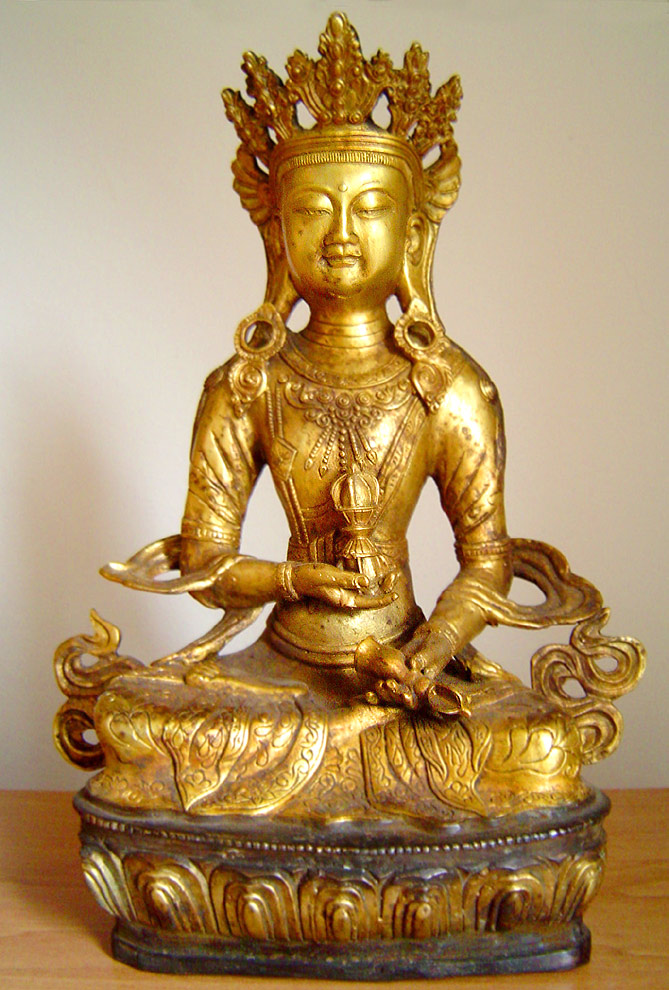Prajna and Upaya - Wisdom and Skillful Means

 Prajna, or 'wisdom', and upaya, 'skillful means' or 'methods', are paired together in Mahayana Buddhism, representing two aspects of the path to enlightenment. Prajna is the insight that arises from a profound understanding of the Four Noble Truths and the three marks of existence – impermanence (annica), suffering (dukkha), and non-self (anatta.) Upaya is the varying means and methods through which each of us gains such insight, which includes meditation techniques, rituals, teaching methods, and more.
Prajna, or 'wisdom', and upaya, 'skillful means' or 'methods', are paired together in Mahayana Buddhism, representing two aspects of the path to enlightenment. Prajna is the insight that arises from a profound understanding of the Four Noble Truths and the three marks of existence – impermanence (annica), suffering (dukkha), and non-self (anatta.) Upaya is the varying means and methods through which each of us gains such insight, which includes meditation techniques, rituals, teaching methods, and more.Prajna (or panna in Pali) is also very prevalent in Theraveda Buddhism, as it is one of the 10 paramitas or 'perfections'. Prajna wisdom is not book knowledge or intellectual insight, although intellectual study of Buddhist teachings may help us to attain it. Rather, prajna is the direct realization, or even experience, of the nature, causes and cessation of suffering (the Four Noble Truths) and of impermanence, suffering and non-self. Prajna most often arises through meditation practice, in which our inquiry into the nature of our own mind gives birth to our direct experience of prajna.
Within Mahayana Buddhism, the highest expression of prajna is presented in the Prajna-Parmita, or Heart Sutra. In this sutra Avalokiteshvara, the Bodhisattva of Compassion, is asked by the monk Sariputra how one may study the prajna-paramita, or perfect wisdom. Avalokiteshvara first answers by describing what prajna is not – negating both sides of several dualities:
“…O Sariputra! Form does not differ from the void, and the void does not differ from the form. Form is the void, and the void is form. The same is true for feelings, conceptions, impulses and consciousness.
O Sariputra, the characteristics of the void is not created, not annihilated, not impure, not pure, not increasing, not decreasing...”
In this way, Avalokiteshvara makes clear prajna cannot be understood through concepts in the mind, or by any 'dual' understanding. It is a non-dual realization of the essence of awareness itself.
Unlike prajna, the concept of upaya is not one that is seen in all branches of Buddhism, but is rather one that is prevalent in Mahayana Buddhism (which includes both Zen and Tibetan Buddhism.) Upaya, or 'skillful means', refers to practices, rituals, teachings, and even teaching methods that are considered a means to an end - a means to enlightenment - for a particular student or group of students. These are considered provisional or expedient truths rather than ultimate truth itself, on the pathway to enlightenment.
When discussing upaya in the Lotus Sutra, the Buddha tells a story of a father whose house is on fire. The father tells his children their favorite toys are outside so they will rush out, thus saving their lives. In this situation, telling the children their toys are outside is upaya – a skillful means of getting them outside. So too, the practices and methods we use along the way in our spiritual journey may not themselves be the truth, but they are a skillful means of leading us to our own realization of the truth.
Prajna and upaya interrelate in many different ways. On the one hand, the methods and means (upaya) of our spiritual practices bear fruit in the form of our direct realization of prajna. Seen from another viewpoint, when we act from a place of prajna, our actions represent upaya – upaya can be seen as prajna in action. This interplay between wisdom and means, prajna and upaya, is the dance of our path as we integrate daily life and spiritual practice.
Symbolically in Tibetan Buddhism, the two ritual objects of the bell and vajra (or dorje) represent prajna and upaya respectively. The image above shows a statue of Vajrasattva, a Mahayana bodhisattva, holding a bell representing prajna in his left (or feminine) hand, and a vajra in his right (or masculine) hand. This representation of prajna as feminine in quality and upaya as masculine is an important teaching in Vajrayana or Tantric Buddhism, and key to understanding yabyum – the union of masculine and feminine forces – within ourselves as part of the enlightenment process.
You Should Also Read:
The Heart Sutra
Upaya
The Ten Perfections of Paramitas

Related Articles
Editor's Picks Articles
Top Ten Articles
Previous Features
Site Map
Follow @mommymystic
Tweet
Content copyright © 2023 by Lisa Erickson. All rights reserved.
This content was written by Lisa Erickson. If you wish to use this content in any manner, you need written permission. Contact Lisa Erickson for details.


